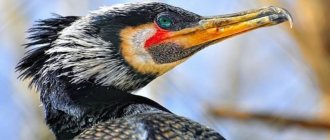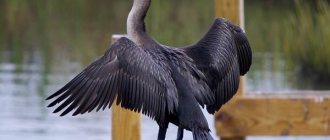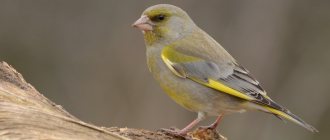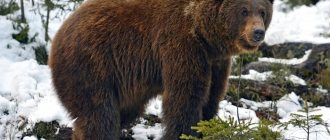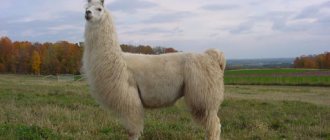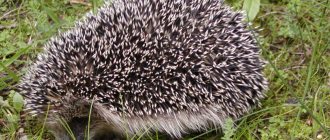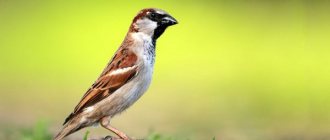In the amazingly diverse world of birds, there are the most curious and exotic individuals, one of which is the cormorant bird.
Part of the pelican order, this species contains about 35 different life forms, making it one of the most widely represented populations on the globe.
Cormorants have an amazingly developed diving ability; they can stay under water with their heads in search of prey for more than 2 minutes.
The wings of a cormorant are also not afraid of moisture and can be abundantly wetted due to fatty (greasy) lubricant, which protects the softest plumage from damage and loss of functionality.
Ornithological scientists consider cormorants to be, to put it mildly, not the most intelligent creatures, having many examples of more intelligent crows stealing eggs from cormorant nests using the method of distraction.
Two birds are involved in the process, which allowed ornithologists to make a well-reasoned conclusion about the qualitative superiority of the raven brain over the cormorant mind.
Despite their stupidity, cormorants are more than interesting to observe and study.
General provisions
The description of the cormorant bird should begin with the fact that, like all varieties of aquatic birds, this representative has webbed feet. This structure of the limbs allows it to move energetically through the water, looking for places where fish accumulate.
The cormorant can dive to a depth of fifteen meters. Nests on coastal trees or cliffs. It can also make a nest on a flat surface or a small island of land.
Nutrition
Fish is the favorite dish of these birds, and they can go “fishing” in large crowds, inviting pelican friends with them.
In a group they drive the fish to shallow water, where they then take each fish for themselves. The basis of the diet is small or medium-sized fish: sardine, herring, anchovy, capelin. However, they are not averse to eating sea turtles, insects and mollusks . Birds are able to stay underwater for about two minutes, while diving to a depth of 15 meters. The cormorant dives directly from the water surface or jumps from a branch without raising waves, absolutely silently. The bird can eat up to 500 grams of fish per day.
Freshwater cormorants, in addition to fish, also feed on frogs and crayfish.
Appearance
As you can see in the photo of the cormorant, its size can reach up to a meter, and its wingspan varies from 0.8 to 1.5 m. The plumage is dark, iridescent, with a golden, steel or greenish tint.
The shade depends on the lighting. Some individuals have parts painted in lighter colors, for example, pale gray or white. The color of the chicks is light brown.
The cormorant's beak is long, curved, and not wide. The neck is elongated, the body is quite large. The voice of this bird is hoarse, its screams resemble groans or muffled croaks. The gait is clumsy and clumsy.
Lifespan
In the wild, a number of cormorants live to be 18 years old. If you take care of the bird, feed it properly, treat it, and let it fly to its heart's content, its life expectancy increases even more.
A number of cormorants live shorter lives for biological reasons. These include, for example, the eared cormorant, which can live only six years.
Cormorants are highly specialized fishers. Therefore, food in reserves differs from natural only in the quality of the fish itself.
Habitat
Where do cormorants live? They are found on the shores of the Atlantic, Pacific, and Indian Oceans. They can also be seen in the Black Sea and in coastal areas near the Mediterranean.
Birds often inhabit islands. They feel equally good in both warm and fairly cold climates. Only six species of these birds live in our country.
Are the birds similar to each other?
There is no unity among cormorants on such an important issue as the need to fly to warmer climes for the winter. Most of the bird community prefers to fly away and stay warm in winter. But a minority does not agree with this and prefers to remain in a verified place of residence.
A number of species may even combine characteristics of sedentary and migratory birds. These include, for example, the red-faced cormorant.
Among all the diversity of cormorants, it is difficult to single out one main line of behavior. Most cormorants are migratory birds, but not all. A significant part of these birds live on rocks near the sea, but among the existing diversity there are easily those that fly deep into the continent. Most can boast of excellent flight, but you can always point to an Indian who does not fly very well.
Therefore, ornithologists always advise clarifying what type of cormorant we are talking about. Some species are very different from each other. For example, the small Indian cormorant, of course, can find a common language with the Black Sea cormorant, but still, it is unlikely that these two birds will really be able to fully understand each other.
Antarctic Blue-eyed Cormorant
Length coverage – 0.75 m. Wingspan – 1.25 m. Weight – 2.5 – 3 kg. The plumage is contrasting. The back, wings and cheeks are painted black.
The rest of the body is white. During the mating season, a crest appears on the crown of the head, and the eyelids and skin around the eyes acquire a bright blue color.
Reproduction and offspring
Sedentary species begin to search for their soulmate in May. Migratory birds, on the other hand, fly to the nesting site with selected companions for reproduction. It is believed that cormorants are monogamous and are able to live in pairs all their lives with one companion. After the nest has been improved, the female begins to lay eggs. The clutch is gradually laid - one egg every 2-3 days, about 6 eggs are laid. After hatching, weak and helpless chicks are born, in dire need of parental care up to the age of six months.
This is interesting! During the hot season, caring cormorants do not fly out of the nest during the day. They protect their babies from the scorching sun with their wings, spreading wet algae around the nest so that the chicks can more easily survive high temperatures.
During such periods they hunt only in the morning and evening, and feed their babies by regurgitating processed food. Both mother and father can do the feeding. Sometimes the bird is dependent on its parents until it reaches full maturity - 2-4 years, until it starts its own family. The chicks, naked from birth, become feathered by 30-80 days of life. The color of their feathers changes several times before maturity. Often these are 3 colors - marriage, second and mature.
Return to content
Cormorant
Length size – 0.9 m. Wingspan – 1.5 m. Body weight can range from 1.8 to 3 kg.
The plumage is black with a green tint, the throat and cheeks are white, the beak is framed by unfeathered yellow skin. There is a large black crest on the head.
Bering cormorant
The average body length is 0.75 m. The wingspan is 1.1 m. Weight is 1.5 kg.
The feathers are painted black with a metallic tint, the skin in the beak area is dark red. There is a crest on the crown.
Indian cormorant
The smallest of the family. Body length - 0.63 m, weight - 800 g. The color of the back and wings is bronze-brown, the belly is black. The skin around the throat is green or dark yellow.
In conclusion, we note that, in general, the cormorant bird population is quite large, although there are two endangered species listed in the Red Book.
The small and crested cormorants are on the verge of extinction. These birds are ruined by their gullibility in other birds (ravens and seagulls).
Some St. Petersburg residents are seriously concerned about the attack of cormorants. Birds make noise under windows and attack pets. What is the reason for the outrage of cormorants and who actually disturbs the peace of citizens is still unclear.
“In recent years, many cormorants can be found in residential areas. We are talking specifically about birds. Who doesn’t know, cormorants are such huge seagulls. At least that’s what they look like externally, if you don’t go into ornithology. Once recently, I even had to watch from a distance how a cormorant dived on a pigeon and killed it with several blows of its powerful beak. And the most interesting thing is that outside the window of the high-rise building in which I live, now almost every evening and even at night you can see flocks of these birds over the roofs of the surrounding houses and hear the loud hubbub that the birds make,” Ignat Seregin shares his experiences on social networks.
What is the reason?
The chairman of the regional charitable public organization “Right to Life”, Svetlana Los, believes that although these birds make sounds that are unpleasant for city residents, the problem with the appearance of cormorants is much more complicated: “The cormorant is a bird of prey, cases of attacks by these birds on cats and other urban animals have been recorded. But the main problem is deratization (comprehensive measures to exterminate rodents, including the use of pesticides - Ed.),” says the animal rights activist.
According to her, the number of sparrows, crows, starlings and pigeons, the usual feathered inhabitants of the metropolis, has significantly decreased in the city.
“Cormorants should live at sea, but now they have chosen the city. They sit on garbage cans and accept food from compassionate people who feed them. And there are almost no other birds, especially sparrows. There aren't even starlings. In the spring there were 2.5 birds, now it is impossible to find a starling. There are almost no crows left,” says Svetlana Los.
The king is not real
Ornithologist at the Zoological Institute of the Russian Academy of Sciences Vladimir Khrabry notes that many people confuse cormorants with herring gulls.
“The cormorant is a completely different bird, from a different order. Cormorants are huge birds, three times larger than a large seagull, living only on water, says the scientist. – Yes, indeed, in recent years seagulls have been actively exploring the urban environment. These birds mainly nest on roofs.”
He also added that the relocation of herring gulls to the city was influenced by the development of the shores of the Gulf of Finland, where the birds used to nest. As a result, the gulls chose city roofs, especially flat ones, as a new nesting site.
“This is a long-standing process that has affected not only Russia, but also many European countries. We can say that urbanization of this species is underway. There is nothing wrong with this, because these birds are orderlies, picking up the remains of human activity and feeding on large insects,” said Vladimir Brave.
According to him, seagulls successfully raise their chicks in an urban environment. In August they leave their cozy nests. As a result, during this period there are significantly more seagulls in the city. At the same time, the elimination of landfills near the city leads to a decrease in the population of seagulls.
Passing through the city
These are cormorants or seagulls, the experts answered.
“Cormorants only fly over St. Petersburg. The birds, which most people call cormorants, are sea gulls, which are present in large numbers in the city. Don’t forget that in addition to the fact that our city is a cultural capital, it is also a large port, surrounded by various water areas,” said Artem Nikitin, chief specialist of the department for organizing and monitoring anti-epizootic and preventive measures of the Veterinary Department of St. Petersburg.
For example, it is known that a micropopulation of gulls actively nests in Sestroretsky and Lakhtinsky Razliv.
It is worth noting that there have been cases of atypical deaths of pigeons, seagulls and ducks in the city. Thus, the story of the dead ducks on the Novaya River became widely known. Then the St. Petersburg residents counted seven carcasses in the river, among which were chicks. The carcasses surfaced near the sewer at the corner of Soldat Korzun and Kozlov streets. By the way, the department of Rosprirodnadzor of the North-West noted that no emergency discharges of wastewater with a high concentration of pollutants were detected. At the same time, the department reported that earlier inspectors had repeatedly taken samples in the river and recorded the influence of runoff from the territory of Pulkovo Airport.
“All cases that become known to the veterinary service are considered from the point of view of dangerous animal diseases, such as avian influenza and psittacosis. These diseases were not detected in any of the recorded cases. The death of these birds can be caused by many factors. One of them is abandoned chicks left without parental care. The other is private external factors, as happened with the Novaya River. Another significant factor is the growth of blue-green algae in closed water bodies. Their growth, in particular, causes the death of birds,” explained Artem Nikitin.
Have you noticed a decrease in the bird population? Let us know about your observations - [email protected]
.
RESEARCH
The European part of Russia is inhabited by two species of sparrows. The most famous house sparrow is Passer domesticus, which in our conditions leads a sedentary lifestyle. Every city dweller meets this nimble bird every day. Sparrows are active birds; they constantly move along the ground in jumps, pushing off with both legs at the same time. Their flight is undulating, usually low above the ground. Most of the year they live in flocks. They often swim in the sand.
“The house sparrow is one of the few species that have always benefited from urbanization or at least kept populations stable. At the same time, since the 80s of the last century, a decrease in the number of these birds has been observed in Europe. For example, in the Czech Republic the number of sparrows has decreased by 75%. According to many researchers, the main cause of “sparrow problems” is the improvement of cities, which leads to a deterioration in the quality of bird habitats and, as a consequence, a decrease in the food supply necessary for survival,” said ornithologist Vladimir Brave.
